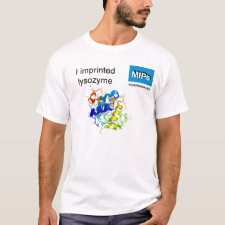
Authors: Sankarakumar N, Tong YW
Article Title: Protein adsorption behavior in batch and competitive conditions with nanoparticle surface imprinting.
Publication date: 2013
Journal: RSC Advances
Volume: 3
Issue: (5)
Page numbers: 1519-1527.
DOI: 10.1039/C2RA21830E
Abstract: Molecular imprinting has proved to be an effective technology for creating synthetic antibodies possessing artificially generated recognition sites that can specifically bind a target molecule. In response to the diffusional limitations associated with imprinting of larger molecules such as proteins, a template-immobilized surface imprinting strategy using mini-emulsion polymerization was previously accomplished. In this work, an extensive study of selective protein adsorption on protein imprinted surfaces is presented. Protein surface-imprinted polymeric nanoparticles were prepared with antibody-like-affinity for various template proteins (Ribonuclease A (RNase A), Lysozyme (Lys)). Methyl methacrylate (MMA) and ethylene glycol dimethacrylate (EGDMA) were used as the functional and cross-linking monomers respectively. Under singular protein rebinding conditions the particles exhibit very high loading and specific recognition toward the template proteins demonstrating the potential of this method as a universal approach for protein imprinting. The influence of the presence of non-target proteins on template protein adsorption was investigated through rigorous binding analysis in binary and ternary protein mixtures. Our study showed that the presence of competing proteins did not significantly alter either the affinity or adsorption capacity of Lys imprinted particles for template protein but did so strongly in the case of RNase A imprinted particles. In-depth analysis of the adsorption kinetics found that strong protein-protein interactions of the protein pair under study and indirect non-specific adsorption of Lys disrupted the recognition property of RNase A imprinted particles. The collective analysis of singular and mixed conditions thus enhanced the understanding of protein adsorption behavior and sequences in competitive environments. Such studies would be crucial for efficient application of synthetic receptors prepared using molecular imprinting in various separation processes
Template and target information: protein, Ribonuclease A, RNase A, Lysozyme, Lys



Join the Society for Molecular Imprinting

New items RSS feed
Sign-up for e-mail updates:
Choose between receiving an occasional newsletter or more frequent e-mail alerts.
Click here to go to the sign-up page.
Is your name elemental or peptidic? Enter your name and find out by clicking either of the buttons below!
Other products you may like:
 MIPdatabase
MIPdatabase









